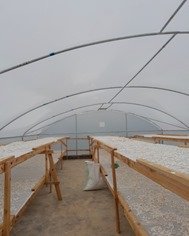Cassava is a highly perishable crop. In Uganda our farmers luck affordable, safe and renewable technology to process the cassava after harvesting and therefore some are forced to harvest on a piecemeal basis or harvest and process using the rudimentary ways. This means harvesting the roots and spreading the crop on the ground to dry by the direct sun. This process takes 5-7 days for the cassava roots to dry. However, the end-product is poor quality cassava full of sand and with a high microbial load. This makes the crop to lose value, food quality and reduces the shelf life of the crop.
Therefore, our initiative of solar dryers at Farm Service Centers will reduce this post-harvest losses suffered by the farmers and will increase the marketability and value of the cassava crop product
The benefits are both economic and environmental
These include
- High quality products
- High market value
- Very effective, Cheap and energy sufficient
- Environmentally sustainable as no Geen House Gases are emitted
- Higher income levels to the farmer
HOW IT WORKS
The structure is built using wood or metal and is covered by an ultra-violet material that collects and entraps the solar energy and concentrates it in the drying chamber as thermal energy, this energy makes the air in the chamber hot and when the hot air is circulated in the chamber the moisture from food products is removed due to thermal action and dries the chips and therefore this reduces microbial growth. The drying chamber can accumulate heat up to 60˚. C. Whereas direct sun drying exposes the cassava chips to dry directly under the sun, solar drying utilizes a heat entrapment mechanism to enhance the moisture removal process.

